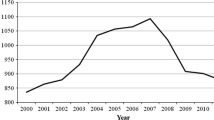Abstract
The paper analyzes subjective poverty in Hungary and compares it to the objective poverty concepts. Subjective poverty is defined by examining who people consider to be poor. Based on the Easterlin paradox, the initial hypothesis states that subjective and absolute poverty concepts are highly correlated. Taking into account that Hungary is a developed country, subjective well-being is supposed to be associated not only with absolute, but also with relative deprivation. The methods of systematic data collection are used to collect data about the belief of the population. The paper concludes that low income level, Roma descent, entitlement to social supports and unemployment are the items thought to be most related to poverty by the informants. It proves that subjective poverty is a multidimensional concept. It also concludes that absolute and relative poverty thresholds coincide with the subjective one. It implies that increasing the absolute income level of individuals may not be enough to improve their subjective wellbeing as they are also concerned with their relative income position.




Similar content being viewed by others
References
Agell, J., & Lundborg, P. (2003). Survey evidence on wage rigidity and unemployment: Sweden in the 1990s. Scandinavian Journal of Economics, 105, 15–30.
Alam, A. M., Yemtsov, R., et al. (2005). Growth, poverty and inequality: Eastern Europe and the Former Soviet Union. Washington DC: The World Bank.
Basmann, R. L., Molina, D. J., & Slottje, D. J. (1988). A note on measuring Veblen’s theory of conspicuous consumption. Review of Economics and Statistics, 70, 531–535.
Boster, J. S. (1983). Requiem for the omniscient informant: There’s life in the old girl yet. In J. Dougherty (Ed.), Directions in cognitive anthropology. Hillsdale, NJ: University of Illinois Press.
Carlsson, F., Johansson-Stenman, O., & Martinsson, P. (2007). Do you enjoy having more than others? Survey evidence of positional goods. Economica, 74, 586–598.
Castilla, C. (2009). Objective versus subjective poverty: Are income positional concerns influencing subjective poverty assessments? Midwest international economic development conference, Minneapolis.
Clark, A. E., Frijters, P., & Shields, M. (2008). Relative income, happiness and utility: an explanation for the Easterlin Paradox and other puzzles. Journal of Economic Literature, 46, 95–144.
de Munck, V. C., & Sobo, E. J. (1998). Using methods in the field: A practical introduction and casebook. Walnut Creek (CA), London, New Delhi: Altamira Press, A Division of Sage Publications, Inc.
Easterlin, R. A. (1995). Will raising the incomes of all increase the happiness of all? Journal of Economic Behavior and Organisation, 27, 35–47.
Fafchamps, M., & Shilpi, F. (2008). Subjective welfare, isolation, and relative consumption. Journal of Development Economics, 86, 43–60.
Frey, B. S., & Stutzer, A. (2002). What can economists learn from happiness research? Journal of Economic Literature, 40, 402–435.
Hegedűs, P., & Monostori, J. (2005). A szegénység és a társadalmi kirekesztődés mérőszámai 2005, Elméleti megalapozás. Budapest: KSH Népességtudományi Kutató Intézet.
Inglehart, R., & Baker, W. E. (2000). Modernization, cultural change, and the persistence of traditional values. American Sociological Review, 65, 19–51.
Johansson-Stenman, O., & Martinsson, P. (2006). Honestly, why are you driving a BMW? Journal of Economic Behavior & Organization, 60, 129–146.
Laeken indicators—Detailed calculation methodology (2003). Statistics on income, poverty and social exclusion. European Commission, Eurostat, Working Group.
Layard, R. (2002). Rethinking public economics: Implications of rivalry and habit. (mimeograph).
Létminimum 2007. (2008). Budapest: Központi Statisztikai Hivatal.
Luttmer, E. F. P. (2005). Neighbors as negatives: relative earnings and well-being. Quarterly Journal of Economics, 120, 963–1002.
Maxfield, M. G., & Babbie, E. (2009). Basics of research methods for criminal justice and criminology (2nd ed.). Belmont, CA: Wadsworth, Cengage Learning.
Neumark, D., & Postlewait, A. (1998). Relative income concerns and the rise in married women’s employment. Journal of Public Economics, 70, 157–183.
Nunally, J. C. (1978). Psychometric theory. New York: McGraw-Hill.
Ravallion, M., & Lokshin, M. (2002). Self-rated economic welfare in Russia. European Economic Review, 46, 1453–1473.
Roberts, J. M. (1964). The self-management of cultures. In W. H. Goodenough (Ed.), Explorations in cultural anthropology (pp. 433–454). New York: McGraw-Hill.
Romney, A. K., Weller, S. C., & Batchelder, W. H. (1986). Culture as consensus: A theory of culture and informant accuracy. American Anthropologist, New Series, 88, 313–338.
Samman, E. (2007). Psychological and subjective well-being: A proposal for internationally comparable indicators. Oxford Development Studies, 35, 459–486.
Spéder, Z. S. (2002). A szegénység változó arcai: Tények és értelmezések. Budapest: Andorka Rudolf Társadalomtudományi Társaság; Századvég.
Vajda, Z. S. (1999). Somlai Péter: Szocializáció. Szociológiai Szemle, 2, 166.
Van Praag, B. M. S. (1971). The welfare function of income in Belgium: An empirical investigation. European Economic Review, 2, 337–369.
Weller, S. C. (1984). Consistency and consensus among informants: Disease concepts in a rural Mexican village. American Anthropologist, 86, 966–975.
Weller, S. C. (2007). Cultural consensus theory: Applications and frequently asked questions. Field Methods, 19, 339–368.
Weller, S. C., & Romney, A. K. (1988). Systematic data collection. Qualitative research methods (Vol. 10). Sage Publications.
Hungarian Census database. www.nepszamlalas.hu.
Eurostat database http://epp.eurostat.ec.europa.eu.
Hungarian Central Statistical Office website. www.ksh.hu.
Hungarian National Bank website. www.mnb.hu.
7 § 224/2006 (XI. 20.) Governmental regulation and 6 § of 329/2006. (XII. 23.) governmental regulation Act III of 1993 in Hungary on Social Administration and Social Transfers.
Author information
Authors and Affiliations
Corresponding author
Rights and permissions
About this article
Cite this article
Siposné Nándori, E. Subjective Poverty and Its Relation to Objective Poverty Concepts in Hungary. Soc Indic Res 102, 537–556 (2011). https://doi.org/10.1007/s11205-010-9743-z
Accepted:
Published:
Issue Date:
DOI: https://doi.org/10.1007/s11205-010-9743-z




